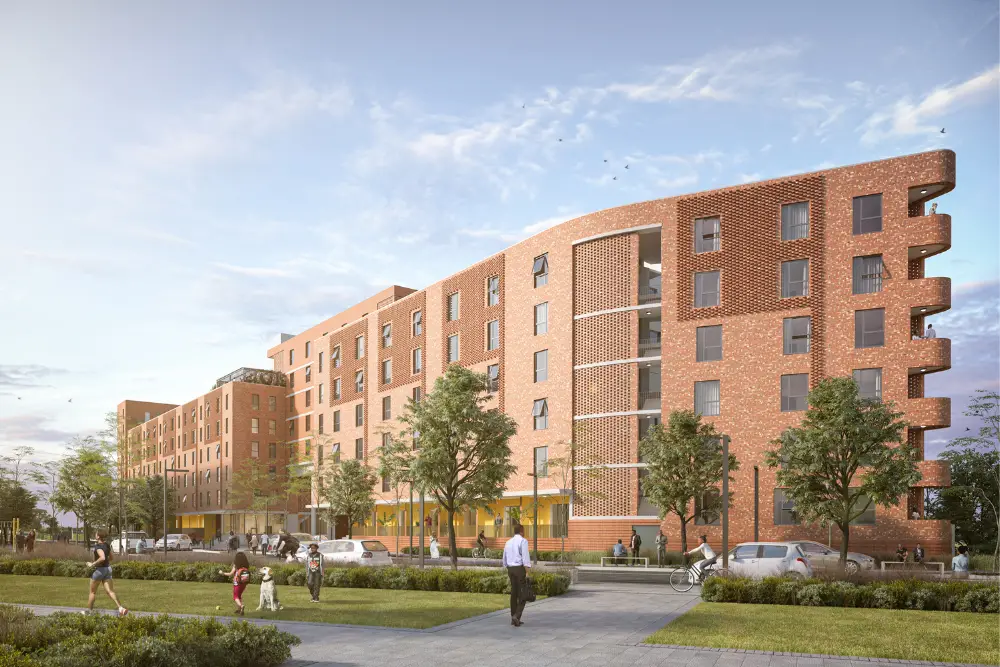Paarl Rock Building is the fifth building in Concor’s 22-hectare Conradie Park development in Cape Town. The building will comprise 266 architecturally designed apartments in an affordable model for first-time home owners.
The Paarl Rock Building will include ground floor retail space, two lifts and a roof top deck on the sixth floor looking westwards at Devil’s Peak and over the Cape Town central business district towards Signal Hill. To minimize the cost of long-term maintenance on the outside walls, the design makes use of face brick – but with a difference.
According to Mark Schonrock, property development manager at Concor different colours and shapes of face brick have been specified to create texture and variety in the façade. “Patterns are also created with rustication, using bricks of different shapes or with varied orientation,” he said.
A perforated design is also used for the brick walls in front of drying yards, letting through light and air while also giving an attractive texture to the building façade. The laying of face bricks requires a somewhat elevated level of skill and attention, and also takes longer, so the best artisans are put onto the rustication work.
Also Read: 203 Oxford in Rosebank Johannesburg, South Africa
Paarl Rock’s innovations
Paarl Rock’s innovations include an energy-efficient hot water system for residents, lowering their cost of living and taking load off the national grid. A centralized hot water generation system on the ground floor raises the upfront cost but provides many long-term benefits to users. An on-roof solar generator will assist in ‘over-heating’ water during the day in a specially-designed storage vessel to around 85 to 90 C.
“Tapping into off-grid power in this way means that residents can save on what they pay in water-heating bills,” said Mr. Schonrock.
Paarl Rock Building is also conserving water and reducing water costs by supplying its own irrigation needs from a master incoming line of treated effluent – at just five to 10% of the cost of potable water. The water quality from this line, which is clean enough to be discharged into river systems, is further treated on site and also used for all irrigation and cleaning purposes.
Construction of the development has begun.
abc
